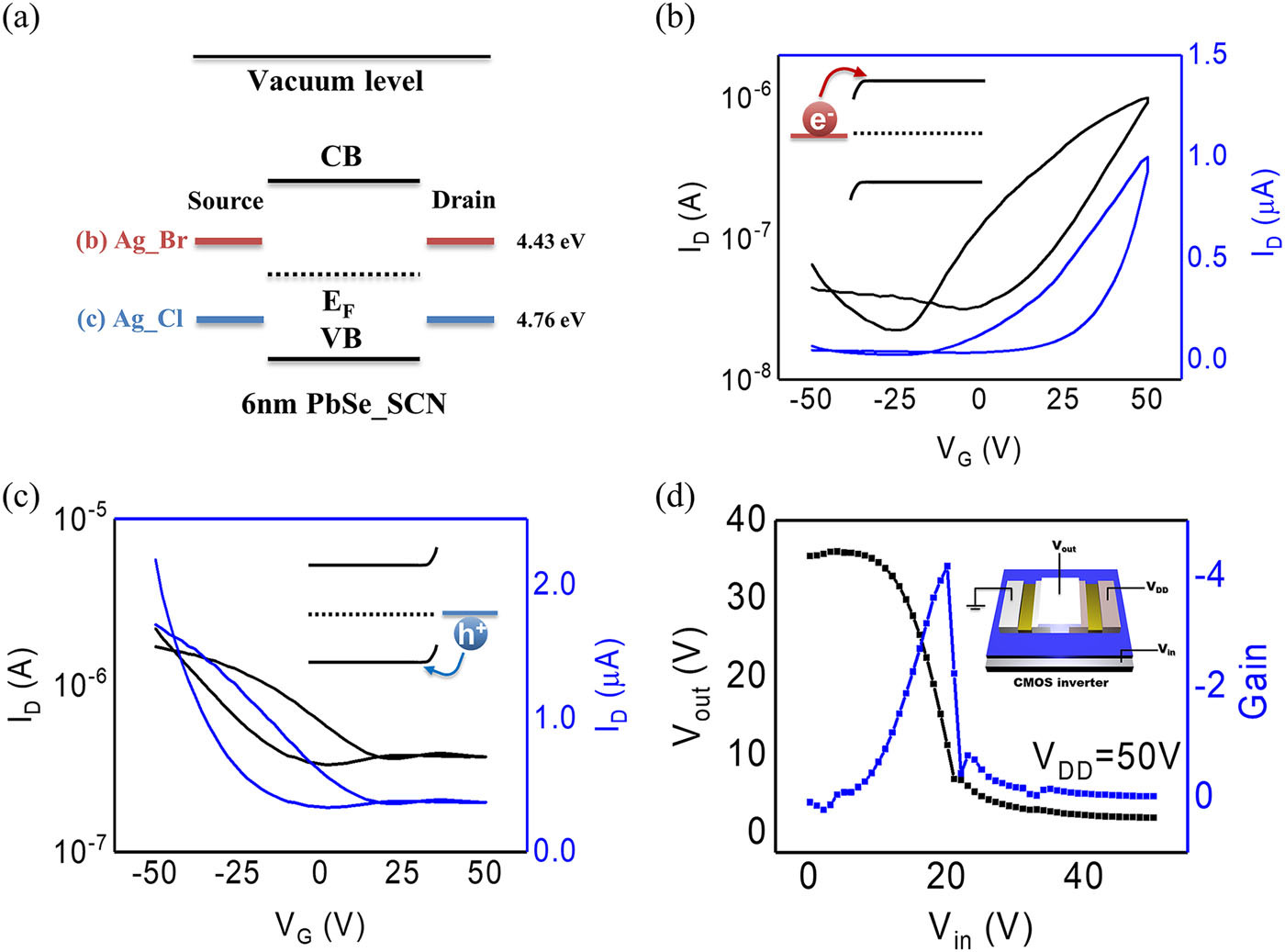Engineering the Work Function of Solution-Processed Electrodes of Silver Nanocrystal Thin Film through Surface Chemistry Modification
슈퍼관리자
2021-05-21
Engineering the Work Function of Solution-Processed Electrodes of Silver Nanocrystal Thin Film through Surface Chemistry Modification
-
Authors :
M Seong, H Kim, SW Lee, D Kim, SJ Oh
-
Journal :
APL Materials
-
Vol :
6
-
Page :
121105
-
Year :
2018

Abstract
A solution-processable electrode is a key component in flexible electronics. Despite recent studies on silver nanocrystal (Ag NC)-based electrodes with high conductivity, the absence of a strategy to control the work function has limited the development of low-cost and high-performance electronic devices. In this report, we introduce a chemical route to manipulate the work function of solution-processed Ag NC-based electrodes. The structural, chemical, optical, and electronic properties, as well as the work functions, of the Ag NC thin films treated with three types of halide ligands (Cl−, Br−, and I−) were investigated. Ultraviolet photoelectron spectroscopy analysis shows that the work functions are shifted to 4.76, 4.43, and 4.04 eV when the ligands are changed to Cl−, Br−, and I−, respectively. The trend in the shift induced by the halide ligands matches the results of atomistic density functional theory calculations and scales with the strength of the dipoles formed by the electron transfer at the NC/ligand interfaces. To demonstrate the impact of our strategy in device applications, we fabricated all-NC-based thin-film transistors and complementary metal-oxide-semiconductor inverters. This study provides a fundamental understanding of the surface states of nanomaterials and also offers technological benefits for the construction of low-cost, high-performance electronic devices.This research was supported by LG Innotek Co. Ltd (No. Q1715551). This was also supported by the Basic Science Research Program through the National Research Foundation of Korea (NRF) funded by Ministry of Science, ICT and Future Planning (No. 2016R1C1B2006534), the Creative Materials Discovery Program through the National Research Foundation of Korea (NRF) funded by the Ministry of Science and ICT (No. NRF-2018M3D1A1059001), the Korea University Future Research Grant, and the KIST institutional project (No. 2E28000).
















